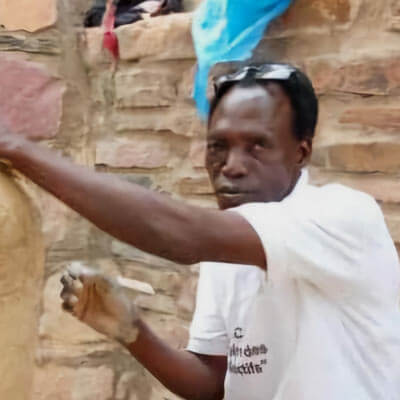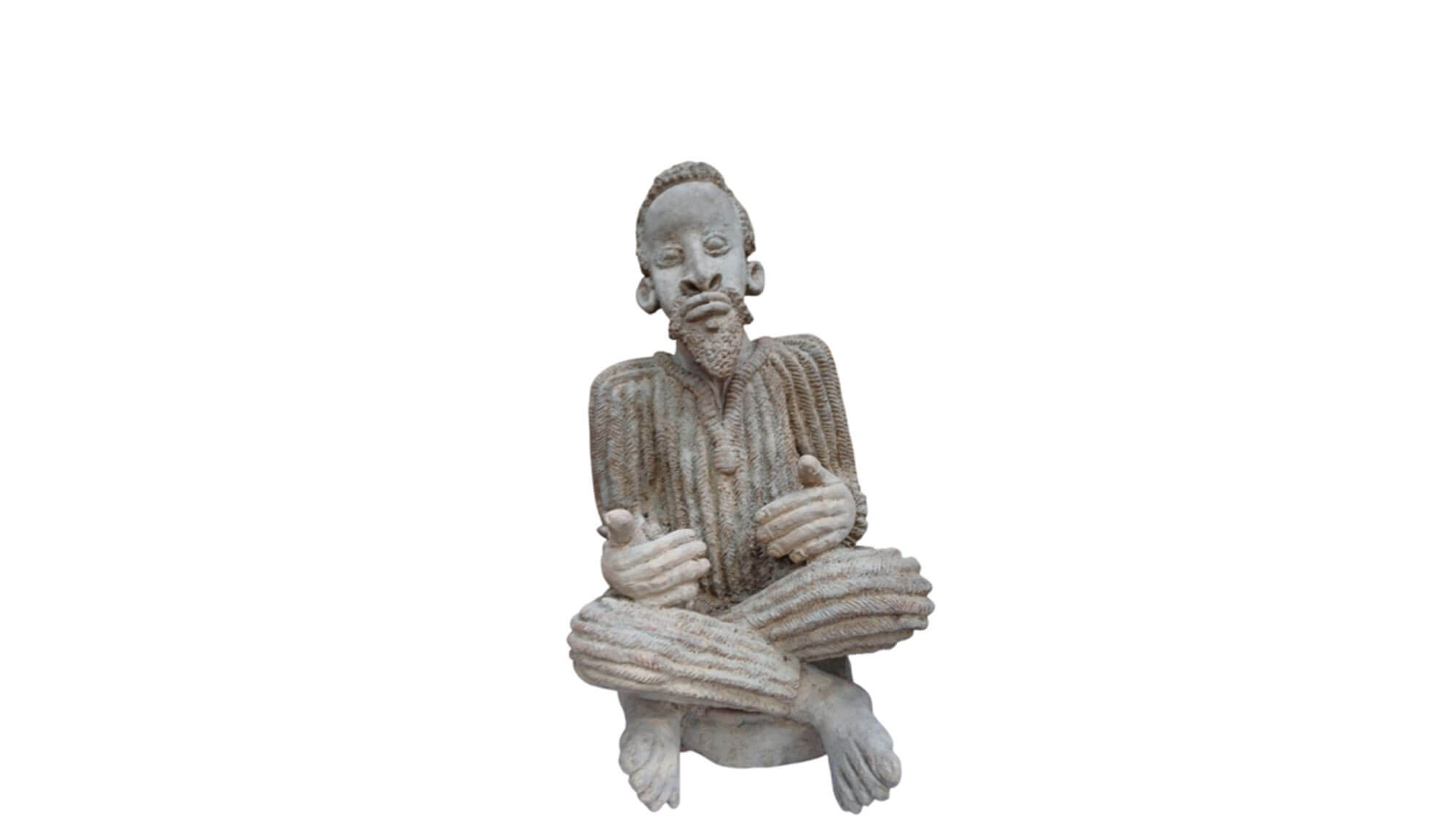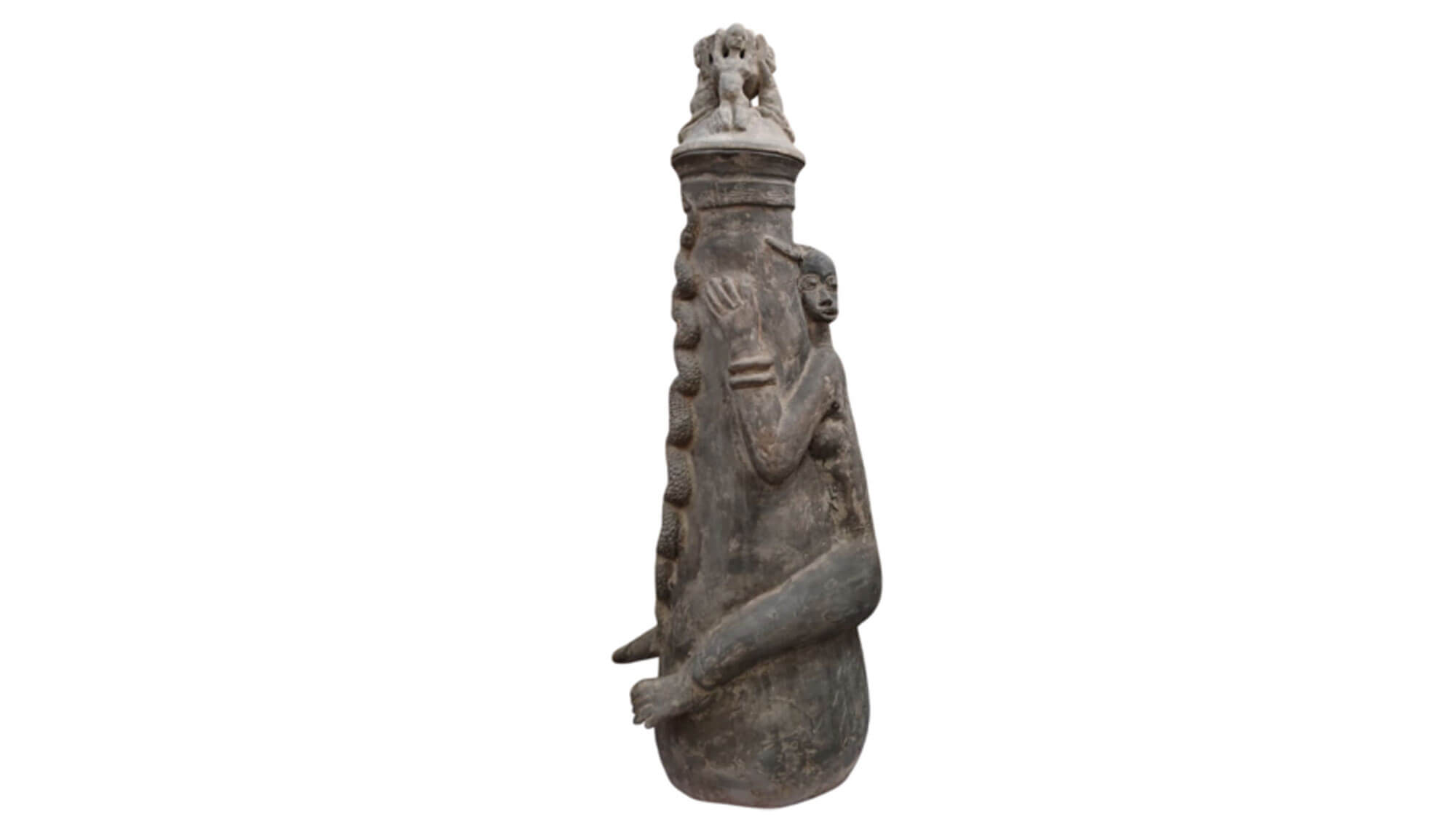“Dust of the Earth – Resisting Through Clay is a profound articulation of survival, memory, and resistance through ancestral craftmanship. Sangho’s who draws from the ancient terracotta traditions of Djenné-Djenno, one of Africa’s oldest ceramic cultures. Rooted in animist cosmologies and oral heritage and figurative ritual forms that today face erasure under rising religious fundamentalism in contemporary Djenné, where human representation is condemned. Sangho, threatened and displaced, continues his work in exile at LAC de Lassa in Bamako, a sanctuary for endangered traditional arts. His installation combines sculptural clay figures, a filmed silent modeling performance, and a digital archive preserving nyamakala techniques and oral histories. The jury honors this deeply layered work for transforming displacement into presence and ancestral craft into cultural defiance, reminding us that tradition is not passive inheritance but active resistance and continuity.”
Jury Statement
Dust of the Earth – Resisting Through Clay is an artistic and political gesture of survival by Malian potter Oumar Sangho, heir to one of the oldest ceramic traditions in Africa: the terracotta heritage of Djenné-Djenno, dating back to the 3rd century BCE. This ancestral practice, rooted in animist beliefs, includes figurative sculpture, spiritual symbolism, and protective ritual forms—transmitted orally through generations.
Today, such forms are disappearing. In Sangho’s hometown of Djenné, religious fundamentalism and cultural repression have rendered his work taboo. Human figures, guardian spirits, and animist symbols are condemned as heretical. His art has become dangerous. Facing threats, marginalization, and economic exclusion, he was forced to flee. He now works in exile, at the LAC de Lassa in Bamako, a collaborative space for endangered crafts and ancestral knowledge.
Dust of the Earth reclaims erased gestures and voices. It gives form to what is no longer allowed to exist. Through each sculpture, Sangho reconnects with a world under threat—transforming exile into presence, clay into testimony. In a global context of crisis, this work affirms that craft is resistance, and that art can be a place to breathe, persist, and remember.
Credits
Concept and Sculptures: Oumar SanghoHost Institution: LAC de Lassa (Laboratoire des Arts Collaboratifs – Bamako, Mali)Video & Sound documentation: to be developed with local partnersCuration & Artistic coordination: Carole Refabert Traoré (LAC de Lassa).
Support received from
LAC de Lassa – Bamako, Mali (residency, space, materials, artistic support)
Local informal networks of artisans and nyamakala communities in Bamako

Oumar Sangho
Oumar Sangho, born in 1973 in Djenné on the banks of the Bani River, is the last known living heir to the pre-Islamic pottery tradition of Djenné-Djenno—an ancient Sahelian practice dating back millennia. Raised within the Fulani artisan caste of the Mâbo, he learned the art of clay from his mother, a respected potter, inheriting the silent knowledge of shaping by hand, firing with wood, and listening to the rhythms of earth and flame. When tourism in Djenné collapsed, he continued to create—not for galleries, but for his community, making everyday objects with dignity and purpose. In 2012, he gained recognition at the Festival sur le Niger in Ségou, and in 2024 joined the “Pottery Revelations” residency at LAC de Lassa in Bamako, where he realized how rare—and urgent—his knowledge has become. Today, he dreams of founding a workshop to train young hands in the language of clay, building a living space rooted in tradition and offered to the future.


